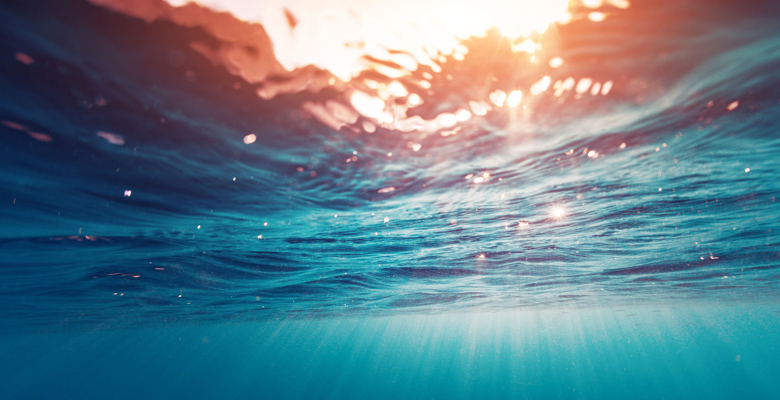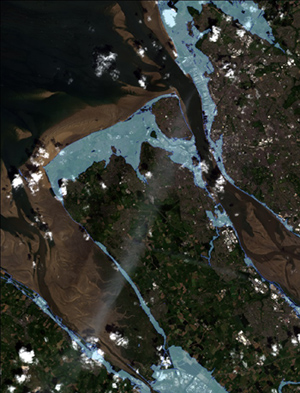Effects of global warming on Merseyside
Geographers show impact of seven-metre rise in sea level

Geographers at LJMU have used mapping software to show how Liverpool, Wirral and parts of Sefton would be affected by a seven-metre rise in sea level.
 Dr Jason Kirby, subject head for Geography and Environmental Sciences, and climatologist, Dr Tom Matthews, chose to show the effects of a seven-metre rise in sea level because at the Paris climate summit in December, governments agreed to work towards a long-term goal to “hold the increase in the global average temperature to well below 2°C above pre-industrial levels and to pursue efforts to limit the temperature increase to 1.5°C. In the past, when the global temperature has been 1.5°C higher than today’s temperature, the sea level was seven meters higher.
Dr Jason Kirby, subject head for Geography and Environmental Sciences, and climatologist, Dr Tom Matthews, chose to show the effects of a seven-metre rise in sea level because at the Paris climate summit in December, governments agreed to work towards a long-term goal to “hold the increase in the global average temperature to well below 2°C above pre-industrial levels and to pursue efforts to limit the temperature increase to 1.5°C. In the past, when the global temperature has been 1.5°C higher than today’s temperature, the sea level was seven meters higher.
The duo produced a map which highlights areas of Merseyside which would be under water if sea level rose by seven metres, and shows the impact at the highest astronomical tide. The light blue shows areas of flooding.
Dr Kirby said: “The Strand really is the most vulnerable part of Liverpool. There would also be water around Castle Street, through to Derby Square, Liverpool One and John Lewis, where the Old Dock was. Albert Dock would be completely inundated in this scenario. The water depth would change because of the tide, so at some low tides it would be dry, but as the tide comes in it would be potentially quite deep water.”
In Wirral, Wallasey would effectively become an island, while Hoylake and lower-lying parts of West Kirby would also be affected. The River Birket, a tributary which runs mainly through Leasowe and Moreton , would also overflow and there would be flooding in parts of Birkenhead.
Even in parts of Merseyside where there is higher ground, Dr Kirby said the impact of more water could cause problems if the drainage system was unable to cope.
Read the full story, covered by the Liverpool Echo, online.


